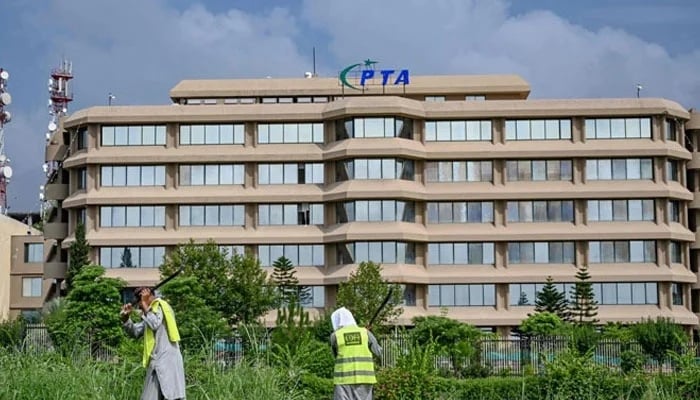
KARACHI: The Pakistan Telecommunication Authority (PTA), in its annual report for 2024, said that even with increasing broadband penetration, Pakistan will experience a difficult transition to 5G, News reported Thursday.
There are concerns over the financial challenges of Pakistan’s transition to 5G wireless technology, even as the use and penetration of wireless telecommunications services, such as broadband and mobile, continues to grow.
Investments in Pakistan’s telecommunications industry have declined from a peak of around $1.6 billion in 2021-22 to $765 million in 2023-24 due to the global transition to 5G. Additionally, the average revenue per user has apparently declined in dollar terms compared to other comparable countries, while still increasing in rupee terms.
This “reflects that the market is very price sensitive… data usage is increasing (but) operators are struggling to monetize it effectively,” noted the president of the Association of Wireless Service Providers and Internet of Pakistan (Wispap), Shahzad Arshad. . “This impacts their ability to invest in large-scale projects like 5G, which require significant capital,” he said.
The PTA report also acknowledges the significant financial burden that the transition to 5G will place on telecom operators, emphasizing that the large initial return on investment could be incremental and cause telecom companies to become cautious.
A major obstacle to widespread adoption of 5G in Pakistan is the scarcity of 5G-enabled devices and their high cost, according to Jazz CEO Aamir Ibrahim, the country’s largest mobile broadband user base. Jazz CEO said devaluation of Pakistani currency has increased functional expenses of telecom companies.
According to the PTA report, the number of mobile telecommunications subscribers in the country increased from around 168.6 million subscribers in 2020 to 193.4 million subscribers in September 2024. Mobile broadband subscribers grew from less than 100 million in 2020 to 138.7 million subscribers. from September this year, representing an increase of more than 20% in broadband penetration over the same period. Currently, 95.5% of cellular mobile sites in Pakistan operate on 4G or fourth generation wireless technology, accounting for just over 94% of the country’s mobile broadband subscribers.
However, the world is rapidly moving beyond 4G to the new, faster generation of wireless networking technology represented by 5G. Currently, 5G networks are operational in more than 70 countries, and more than 100 additional countries have either 5G spectrum allocations planned through 2025 or commercial 5G-ready infrastructure deployments underway.
According to the PTA report, 5G offers radical improvements over its predecessor 4G in key metrics such as peak data rates (20 Gigabits (Gbps) per second compared to just 1 Gbps for 4G). Simply put, the rollout of 5G is believed to make internet connections across the world much faster and more reliable.
The PTA report claims that this “ultra-fast, low-latency connectivity” will help “boost economic growth and social development, create employment opportunities, bridge the digital divide and position Pakistan as a key player in the global digital economy.
The PTA report also cites the urban-rural digital divide as a potential challenge to 5G deployment in the country. These concerns are shared by Arshad, who highlights the need for “substantial policy reforms and incentives” to avoid delayed or limited/focused deployment of 5G.
Likewise, the PTA report argues that government incentives and public-private partnerships could be crucial to easing the financial pressure related to 5G and promoting necessary investments in the next generation of networks.
